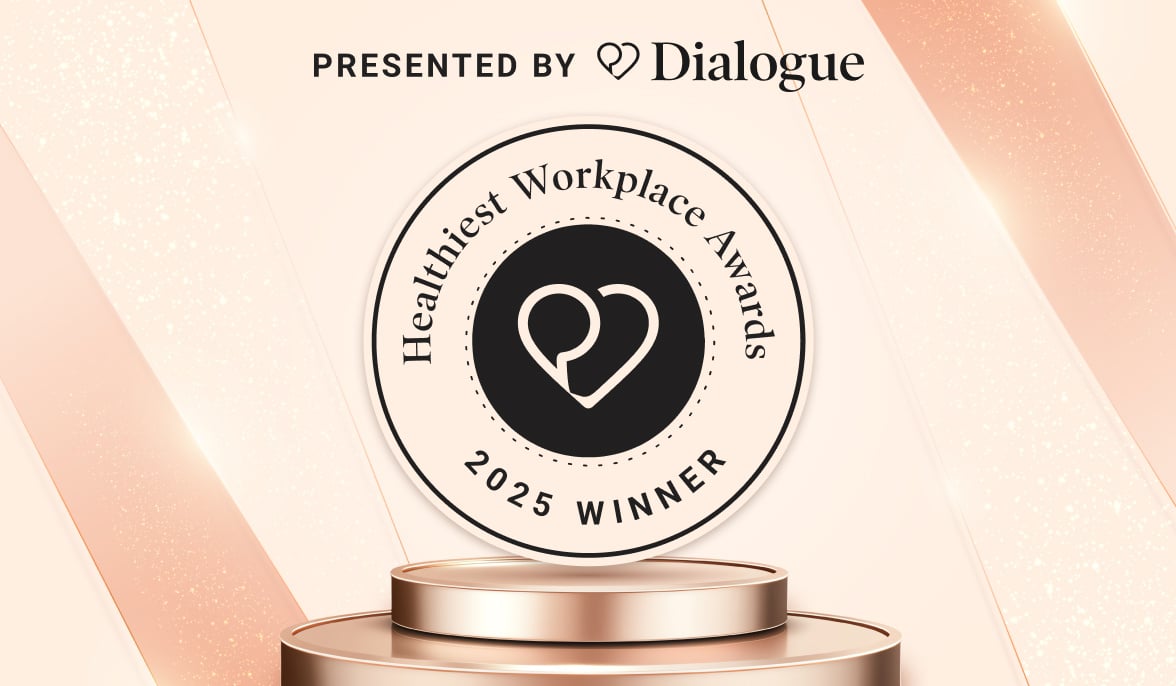Today, 75% of HR leaders say DEI is critical to company success. But if progress continues at the current rate, it will still take 151 years to close the gender pay gap at work.
Why aren’t DEI efforts cutting it?
In short: there’s a lack of support for women at work. Women are committed to advancing their careers — and many are quitting in droves in search of better workplaces that give them the flexibility and care to do so.
Many organizations have programs to support women’s career success, but forget that health and wellness also play a role. Employee benefits that help close the health gap can give women the support they need to thrive – and prevent them from leaving.
The need for a shift in approach
Research for women’s health issues is often underfunded, which is part of what holds them back from putting well-being first. And women are misunderstood and misdiagnosed more frequently than their male counterparts.
Today, more women are standing up and advocating for themselves, and they’re looking for better healthcare options.
That's why leaders should invest in support for women's health, empowering them to bridge the health gap. In turn, those benefits can also help them stay productive and advance their careers.
Empowering women through employee benefits
Tailored benefits can address the many oft-overlooked aspects of women’s health and well-being.
For example, maternity and postpartum support is often lacking. When women take maternity leave, they might feel uncertain about their future at work, which adds to the stress of a new baby. Topping off maternity and parental leave to alleviate the financial strain can help retain employees with new families.
Beyond cash benefits, employers can offer wellness initiatives for new mothers, including career counselling and financial planning to help them settle back into their roles when they return.
For the 10% of women who suffer from depression and anxiety during pregnancy, mental health support is crucial. New health issues, worries about the health of the baby, and isolation can all take their toll during pregnancy. In addition, almost 1 in 4 women experience postpartum depression. Access to comprehensive mental health consultations can enable a smoother transition back to work.
That’s just one example of how gender-specific policies can help in various ways.
More broadly, better mental health support can equip women to deal with stress related to imposter syndrome, microaggressions, and other unique barriers.
And beyond individual policies, a culture that values work-life balance is critical. So, how do you create a larger system of support for women’s health at work?
Strategies for fostering women’s well-being
According to The Global Alliance for Women’s Health, “every $1 invested in women’s health unlocks $3 in economic growth.” That means supporting women’s well-being over the long term can have a significant impact on your bottom line.
Flexible work arrangements and virtual care
Amid the great return-to-office, employees are pushing back. 84% of women say flexible work options influence their decision to stay in or leave a job — allowing them to better balance personal and caregiving responsibilities with career growth. Giving employees the option to work from home can level the playing field, help retain women, and mitigate risks of burnout.
In addition to equal opportunity to work, remote employees need equal access to employee benefits. Virtual care providers can offer added flexibility, giving women and their dependants quick access to the support they need, without taking time away from work.
Programs that support women’s health and wellness
Ensuring that health and wellness programs support female employees could involve things like:
- Tailored physical health support and follow-ups
- Maternity leave and postpartum care
- Mental health support through life transitions such as motherhood, back-to-work, and menopause
- Resources for family planning
- Employee assistance programs with counselling for career growth and work-life balance
These benefits empower women throughout their health journey, from prevention to recovery — while providing the flexibility and resources to balance work and personal life.
Supportive mentorship and advocacy
Mentorship is a significant factor in success. But one study found that 63% of women have never had a formal mentor. Formal mentorship programs can help women find senior leaders who can guide them through the early stages of their careers, and break down some of the structural barriers they face at work.
Creating a sense of community
When a strong sense of community exists, it becomes easier for employees to voice their concerns and drive positive changes in the workplace and beyond. It can also help women make the higher-level connections they need to innovate at work.
Implementing change and measuring impact
Change is only as good as its outcome. That’s why it’s important to assess and iterate on different ways to support well-being by tracking things like:
When you understand the problems within your workplace, you have a better chance of fixing them. Encourage feedback with employee surveys and one-on-one meetings to ensure the changes you make have the right impact.
Make your workplace healthier for women
Supporting women at work is about more than just a policy. It’s about creating inclusivity at every level, through tailored support that addresses their specific needs and promotes overall well-being. With the right resources, women can take their careers to the next level without sacrificing their personal goals.
Want to get started making your workplace better for female employees? Ask women what they need.
Then, take a look at how Dialogue’s health and wellness programs work together to bring immediate and long-lasting care to all your team members.





 Canada (EN)
Canada (EN)
 Global (EN)
Global (EN)




.png?width=2150&height=477&name=Frame%20(2).png)
.png?width=2058&height=888&name=Frame%20(3).png)





